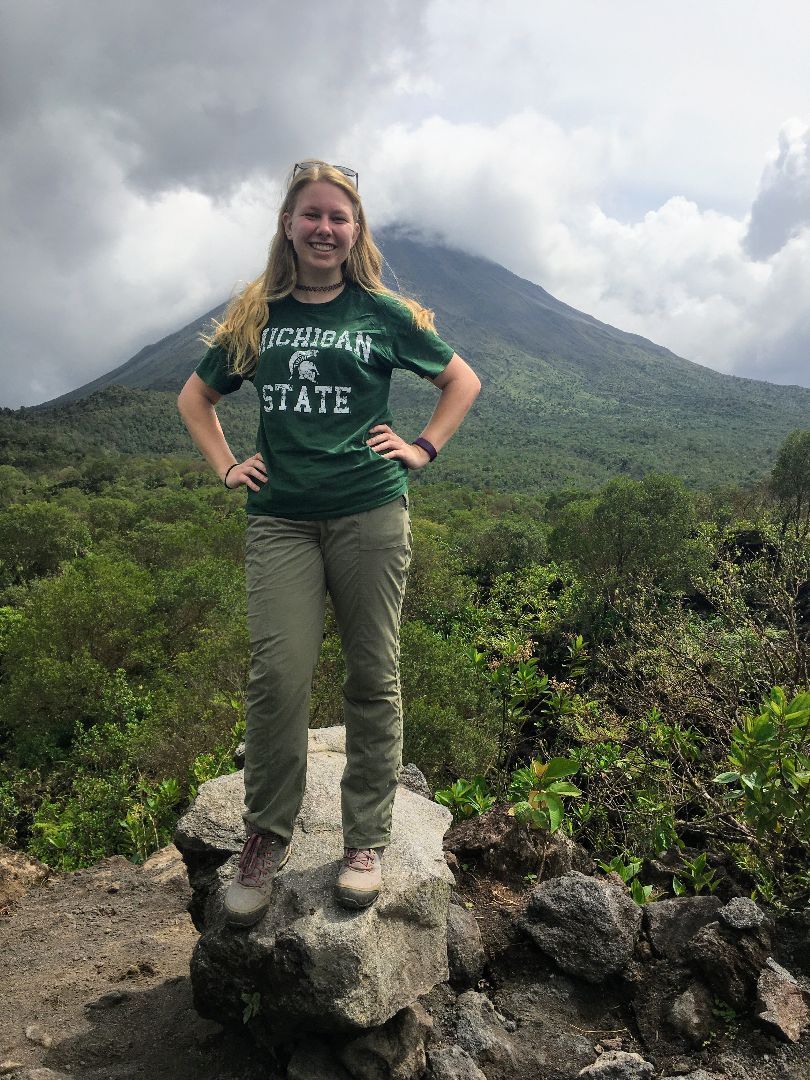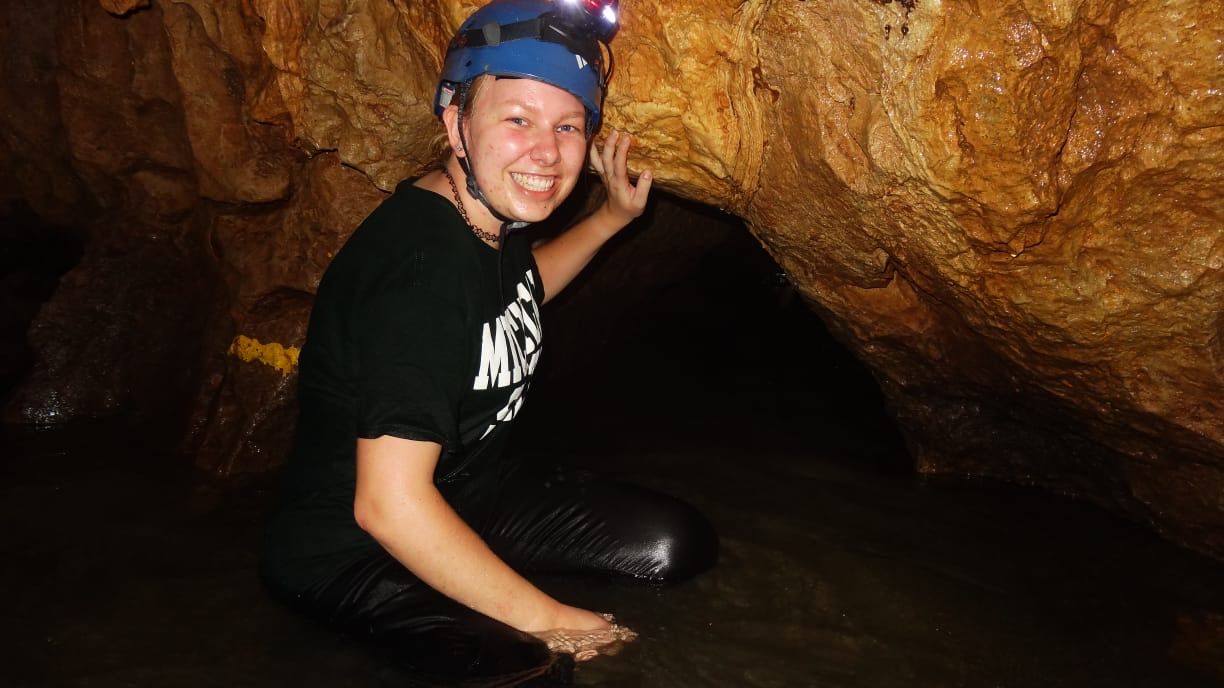
Soon we could hear the ocean. The only thing between our group and the Pacific was the muddiest, steepest downhill hike we’d seen yet. When we got about half-way down, Frenier stopped to show us an anteater in a tree. It was a northern tamandua sleeping in some branches about 20 feet up. We got a quick look, but were sliding down the muddy hill and had to keep moving. We arrived at one of the park’s rest areas where we watched the ocean and some spider monkeys in the tops of trees as we enjoyed part of our lunch.
On our way out, a great curassow (large black pheasant-like bird) flew up on the trail directly in front of us. Not long after, we reached a large waterfall where people were swimming. Being hot and sweaty after six hours of hiking, several of us took a cool, refreshing swim in our hiking clothes. But after we heard that a baby crocodile was spotted close by, we decided to dry off before his mom came. Back on the main trail, I saw a king vulture high up in the sky, along with some turkey vultures.
We made it back to camp around 3:30pm and were given the rest of the day to cool down. That evening, a few of us were in the lab of the biological station writing in our journals and documenting the many species of animals we’d seen when Nancy, the Campanario director, ran in. She told us to quickly get our gear because a tapir was outside. It was chaos. Seven of us were running everywhere, gathering boots, headlamps, and cameras. I have never ran up such steep steps so fast in my life. Outside we shined our lights into the bushes and saw this huge mammal eating some leaves. Nancy told us he looked juvenile, even though he was the size of a small cow. He almost looked like a small elephant with small, rounded ears and a short trunk that he used to eat leaves. After his exciting visit, we headed back inside the station for dinner by candlelight...since the center has only enough electricity to keep some refrigeration.

Name: Olivia Simons
Status: Junior
Major: Integrative Biology
Hometown: Alto, Michigan
Program: Environmental Studies in Costa Rica